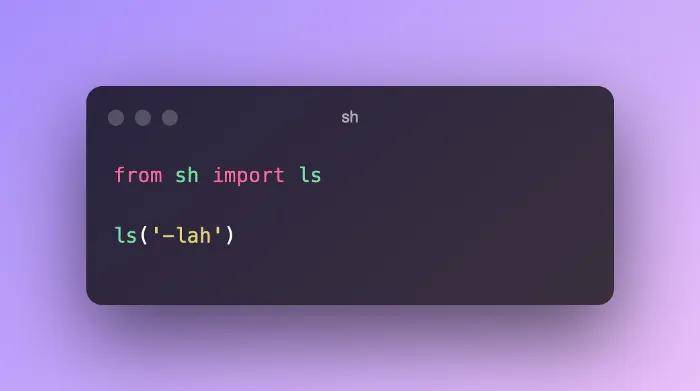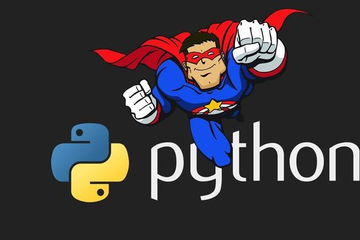13个你不知道的Python技巧

Python/ target=_blank class=infotextkey>Python 是顶级编程语言之一,它具有许多程序员从未使用过的许多隐藏功能。
本文,我将分享13个你可能从未使用过的 Python 特性。不浪费时间,让我们开始吧。
1. 按步长取数
知识点: list[start:stop:step]
-
start: 开始索引, 默认为0 -
end: 结束索引, 默认为列表长度 -
step: 步长, 默认为1, 可以为负数, 如果为负数, 则为倒序.
data = [1, 2, 3, 4, 5, 6, 7, 8, 9, 10]
print(data[::2]) # [1, 3, 5, 7, 9]
print(data[::-1]) # [10, 9, 8, 7, 6, 5, 4, 3, 2, 1]
print(data[2:7:-2]) # [] ⚠️注意:步长为负数时,结果为空
print(data[7:1:-2]) # [8,6,4] # ⚠️ index 属于 [7 -> 1),步长为2。
2. find 方法
知识点:list.find(obj, [start, [stop]])
-
list: 列表或者字符串 -
obj: 查找的元素 -
start: 开始索引, 默认为0 -
stop: 结束索引, 默认为列表长度
找不到返回-1
x = "Hello From Python"
print(x.find("o")) # 4
print(x.find("o", 5)) # 8
print(x.find("From Python")) # 6
print(x.find("No exist")) # -1
3. iter() 和 next()
# iter() 函数用于将一个可迭代对象转换为一个迭代器
# next() 函数用于获取迭代器的下一个返回值
values = [1, 3, 4, 6]
values = iter(values)
print(next(values)) # 1
print(next(values)) # 3
print(next(values)) # 4
print(next(values)) # 6
print(next(values)) # StopIteration
4. 测试文档
Doctest 功能将让您测试您的功能并显示您的测试报告。如果您检查下面的示例,您需要在三重引号中编写一个测试参数,其中>>>是固定的语法,你可以增加测试案例,并运行它!如下所示:
# Doctest
from doctest import testmod
def Mul(x, y) -> int:
"""
This function returns the mul of x and y argumets
incoking the function followed by expected output:
>>> Mul(4, 5)
20
>>> Mul(19, 20)
39
"""
return x * y
testmod(name='Mul')
# 输出如下:
"""
**********************************************************************
File "mAIn.py", line 10, in Mul.Mul
Failed example:
Mul(19, 20)
Expected:
39
Got:
380
**********************************************************************
1 items had failures:
1 of 2 in Mul.Mul
***Test Failed*** 1 failures.
"""
5. yield
yield 语句是 Python 的另一个令人惊奇的特性,它的工作方式类似于 return 语句。但它不是终止函数并返回,而是返回到它返回给调用者的地方。
yield 返回的是一个生成器。可以使用 next() 函数来获取生成器的下一个值。也可以使用 for 循环来遍历生成器。
def func():
print(1)
yield "a"
print(2)
yield "aa"
print(3)
yield "aaa"
print(list(func())) ## ['a', 'aa', 'aaa']
for x in func():
print(x)
6. 字典缺失键的处理
dic = {1: "x", 2: "y"}
# 不能使用 dict_1[3] 获取值
print(dic[3]) # Key Error
# 使用 get() 方法获取值
print(dic.get(3)) # None
print(dic.get(3, "No")) # No
7.for-else, while-else
你知道 Python 支持带有 for-else, while-else 吗?这个 else 语句会在你的循环没有中断地运行完后执行,如果中途中断了循环,则不会执行。
# for-else
for x in range(5):
print(x)
else:
print("Loop Completed") # executed
# while-else
i = 0
while i < 5:
break
else:
print("Loop Completed") # Not executed
8. f-string的强大
a = "Python"
b = "Job"
# Way 1
string = "I looking for a {} Programming {}".format(a, b)
print(string) # I looking for a Python Programming Job
#Way 2
string = f"I looking for a {a} Programming {b}"
print(string) # I looking for a Python Programming Job
9. 改变递归深度
这是 Python 的另一个重要特性,它可以让您设置 Python 程序的递归限制。看一下下面的代码示例以更好地理解:
import sys
print(sys.getrecursionlimit()) # 1000 默认值
sys.setrecursionlimit = 2000
print(sys.getrecursionlimit) # 2000
10. 条件赋值
条件赋值功能使用三元运算符,可以在特定条件下为变量赋值。看看下面的代码示例:
x = 5 if 2 > 4 else 2
print(x) # 2
y = 10 if 32 > 41 else 24
print(y) # 24
11. 参数解包
您可以解压缩函数中的任何可迭代数据参数。看看下面的代码示例:
def func(a, b, c):
print(a, b, c)
x = [1, 2, 3]
y = {'a': 1, 'b': 2, 'c': 3}
func(*x) # 1 2 3
func(**y) # 1 2 3
12. 呼唤世界(没啥用)
import __hello__ # 你猜输出啥?
# other code
import os
print(os) # <module 'os' from '/usr/lib/python3.6/os.py'>
13. 多行字符串
此功能将向您展示如何编写没有三重引号的多行字符串。看看下面的代码示例:
# 多行字符串
str1= "Are you looking for free Coding "
"Learning material then "
"welcome to py2fun.com"
print(str1) # Are you looking for free Coding Learning material then welcome to Medium.com
# 三重引号字符串
str2 = """Are you looking for free Coding
Learning material then
welcome to py2fun.com
"""
print(str2) #和上面的是不同的,换行也会被输出。
小节
这些就是今天分享的 Python 的 13 个特性,希望你觉得这篇文章读起来有趣且有用。


























